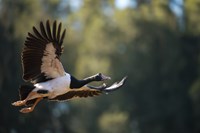Melbourne Water
Biodiversity monitoring
Water management
Melbourne’s catchments encompass around 25,000 km of interconnected waterways. Conducting a biodiversity survey across such a scale was not practical or feasible using traditional methods like trapping and electrofishing, both in terms of costs, short survey window and accessibility of many sites. eDNA allowed the scalable approach that Melbourne Water required, through it’s fast, easy-to-manage water sampling method, coupled with the power of genetic science.
Water samples were collected from 350 sites at rivers, creeks, estuaries and wetlands. EnviroDNA extracted DNA and used eDNA metabarcoding to identify species. Using this technique, we assessed for species from entire taxonomic groups (e.g., fish, vertebrates etc.), generating thousands of DNA sequences that enabled the detection of species. We then compared the eDNA results to existing biodiversity data that Melbourne Water and others had collected over 20+ years using traditional methods.
A total of 179 species were detected. Highlights included 50 native and invasive fish species. Out of the 34 freshwater fish species previously recorded over 20 years of fish trapping or electrofishing surveys, there were only five that were not detected using eDNA.
Results included 36 mammal species including natives such as various possums and bats, as well as introduced species including deer, cattle, dogs, foxes and rabbits. 61 aquatic bird species were detected, including the threatened blue- billed duck, Australian shelduck and the magpie goose. eDNA was also able to detect arboreal and terrestrial species like the flame robin, the satin bowerbird and Australia’s iconic superb lyrebird.
A total of 19 decapod species were detected. These included new records and possibly new species of burrowing crayfish that nobody knew lived in Melbourne’s water catchments. Burrowing crayfish are elusive and very difficult to find, and we now believe that eDNA is an efficient method for detecting them in comparison with current capture methods.
This approach using eDNA generated more data for Melbourne Water than previously possible across a broad scale. The data significantly increased Melbourne Water's biodiversity database that will help enable ongoing monitoring of key biodiversity values in their catchments.

